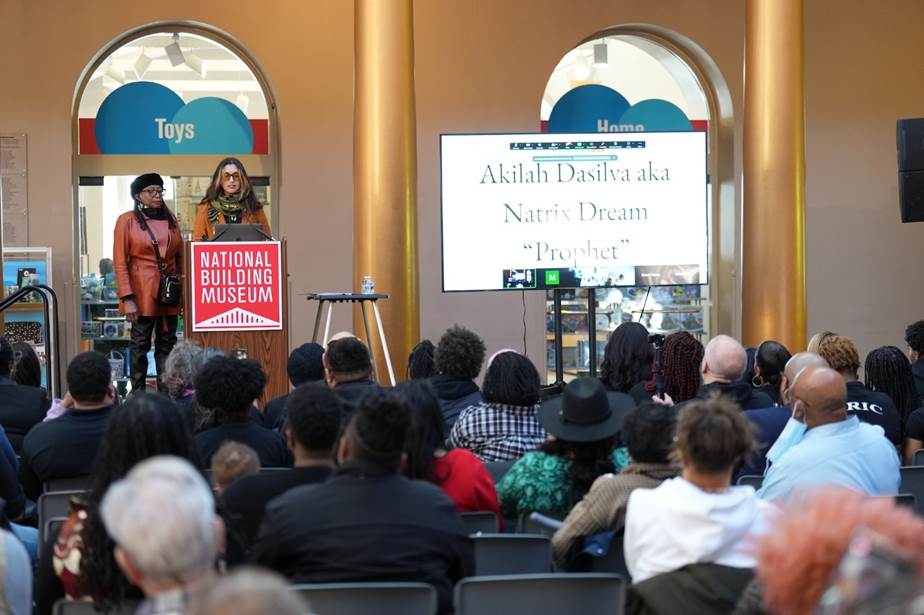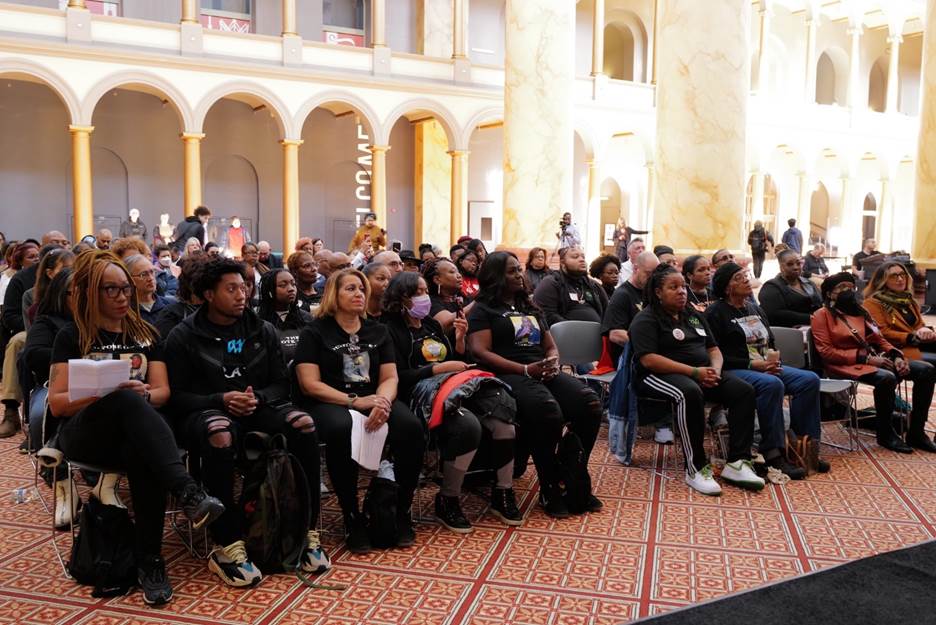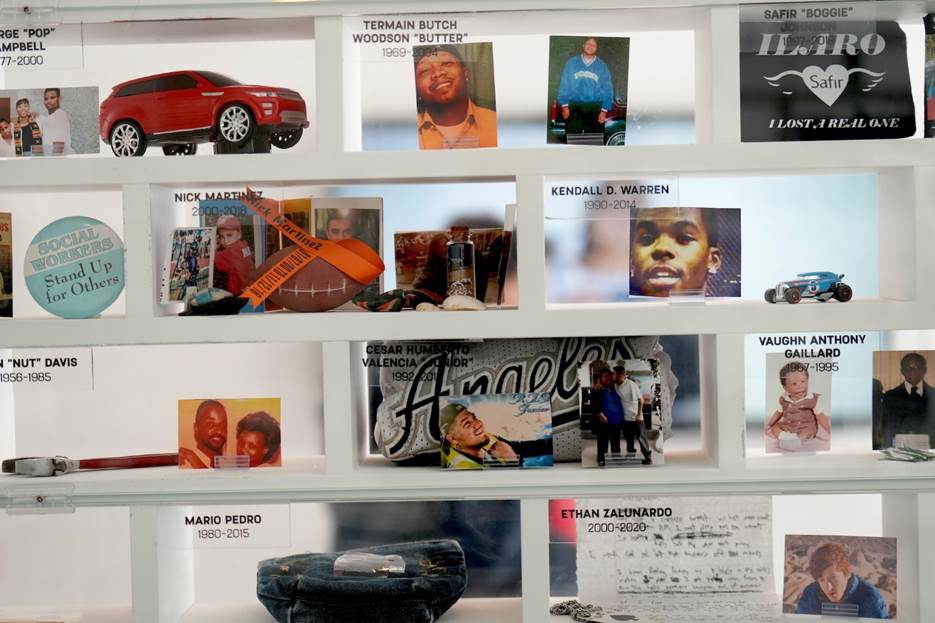


Gun Violence Memorial Closes as Gun Violence Continues
By Phil Pasquini

Washington: A closing ceremony was held on March 4 at the National Building Museum for the shocking and profoundly sad Gun Violence National Memorial Project where it has been on display since April 2021.
With its closing, future exhibitions are now being planned to take place around the country while those involved in its creation are lobbying for a permanent National Gun Violence Memorial to be built in Washington to honor all those killed in the ongoing senseless killings.
The visually impactful exhibit to those killed in gun violence is composed of four large transparent houses whose walls are each made up of 700 hollow brick shapes sheathed behind glass containing the personal effects, significant objects and photographs given or lent to the project by the victims’ loved ones in honor of their memory.
The 700 bricks composing each house are significant as they represent the weekly average number of victims killed by gun violence in the US in 2021 when the exhibition was first conceived. Collectively, the four houses equal the total number of people killed by gun violence in a single month. Ever more shocking is that it would take 48 such houses just to memorialize all the gun violence victims killed in one year.
The profoundly introspective and successful exhibit was designed by the Model of Architecture Serving Society (MASS Design Group) who espouse “that architecture has a critical role to play in supporting communities to confront history, shape new narratives, collectively heal and project new possibilities for the future.” The resulting design was created through a collaboration with artist Hank Wills Thomas, Purpose Over Pain of Chicago and Everytown For Gun Safety, a national organization.
The effect of the exhibit is a highly personal means of telling the stories of victims in a nation overloaded with guns and violence. Each brick highlights the life of a victim by adding a name and personal effects contextualizing them as a real person in a world where too often discussion of such killings is statistical and impersonal. Being able to show the victim as a person engaged in life along with mementos and photos of family and friends gives the vitrines a powerful means of communicating the aggerate loss of their life, a dimension not achievable by merely reporting facts.
After opening comments about the importance of the memorial, the ceremony moved on to the reading of names of all those whose memory is contained in the memorial. The massive list of 925 names took an hour to conclude lending yet another horrific dimension to the tragedy that has befallen our country through such senseless violence.
In closing, Chicago Firefighter Annette Holt spoke of her son, 16-year-old son Blair Holt, an honor student at Julian High School, who was murdered in 2016 after boarding a crowded school bus at the end of the school day. “My only child, he was murdered doing what I asked him to do. Go to school and do your very best every day. Right around Mother’s Day as a matter of fact.”
While seated, Blair was shot by a teenage gang member who boarded the bus and opened fire with a .40 caliber handgun intending to shoot a rival gang member. As the gunman opened fire, Blair reacted by pushing the girl next to him down on the floor of the bus and shielded her with his own body. Missing his intended victim, one of his errant shots instead hit Blair. In total, five students were shot with only Blair having been killed. His mother went on to say, “And my son saved a young lady’s life, so not only was he a victim but he was also a hero.” In closing, she spoke glowingly recalling how special her son was to her and by saying, “If I could pick out a child, I’d pick him out over and over, and over again. I was so blessed to have this young man in my life.”
Annette Holt concluded her comments by aptly stating, “We are never the same after losing our children.”
Photos by Phil Pasquini
(Phil Pasquini is a freelance journalist and photographer. His reports and photographs appear in the Washington Report on Middle East Affairs and Nuze.ink. He is the author of Domes, Arches and Minarets: A History of Islamic-Inspired Buildings in America.)

